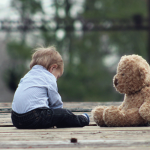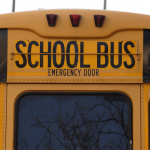
22 Oct Why would my child hurt themselves?
A new study into suicide rates within Australia highlights those most at risk including a rise in deaths by suicide amongst young people.
Teenage expert and award winning speaker Michelle Mitchell has over twenty years of experience tackling the distressing, confusing and fraught issue of suicide, self-harm and mental wellbeing in our young people and it’s far reaching impact on family and community. Additional funding is a much needed support for a system under duress however Mitchell believes it’s time to change the conversation and deliver programs that support the individual and the family NOT the issue in isolation.
Mitchell while applauding the much needed funding believes it’s time to look to grassroots, community driven programs to support the new government initiative to reduce suicide in young Australians, “When kids struggle with mental health it’s the parents, community and practitioners working together identifying and managing those at risk that can create change and this is where we need to see funding.”
In her own experience it’s not only the individuals but the families that are reaching out for help, “Parents who have children struggling are reaching out, appealing for assistance. They are looking for mentoring programs, support groups, role models, care and connection points to gain help. I receive messages weekly from young people asking for help but challenged to find it in any other format except a psychology room (expensive or limited) and a hospital (which are often overrun and not ideal for many young people).”
Mitchell is not discounting the need for hospitals, psychologists and medication, “Seeing a psychologist or a stay in hospital has to be one ‘option’ in a diverse range of options that deal holistically with the individual, the family, their unique circumstances. These options are best delivered by grassroots, community programs which are creative, all-inclusive and more flexible than can be offered by larger organisations.”
In Mitchells experience the young people that made it through tough times highlighted the need for community connections, “There is currently a huge gap of hands-on intervention that occurs between the crisis moment and the lead up. This is the gap that needs to be filled.
“Our young people are operating in ways that lend themselves to loneliness, or lack of real face-to-face connections. This is where we can really activate change. Young people will tell me that it was actually the ‘who” not the ‘what’ that made all the difference in their lives. They often only meet ‘that’ person by coming in contact with caring adults who are committed to the cause.”
“It’s not just the child who is affected, it is the whole family – their mental health, time, energy…what people need most of all is hope and connections.” She said.
Readers seeking support can contact Lifeline on 13 11 14 or Headspace on 1800 650 890
 Self-Harm: Why Teens Do It and What Parents Can Do To Help
Self-Harm: Why Teens Do It and What Parents Can Do To Help
by Michelle Mitchell, published by Big Sky Publishing, p/b RRP $24.99.
Self-harm is probably a lot more common than most research suggests. Michelle Mitchell looks at self-harm, why teens do it, and what you can do to help.
Reviewed here




